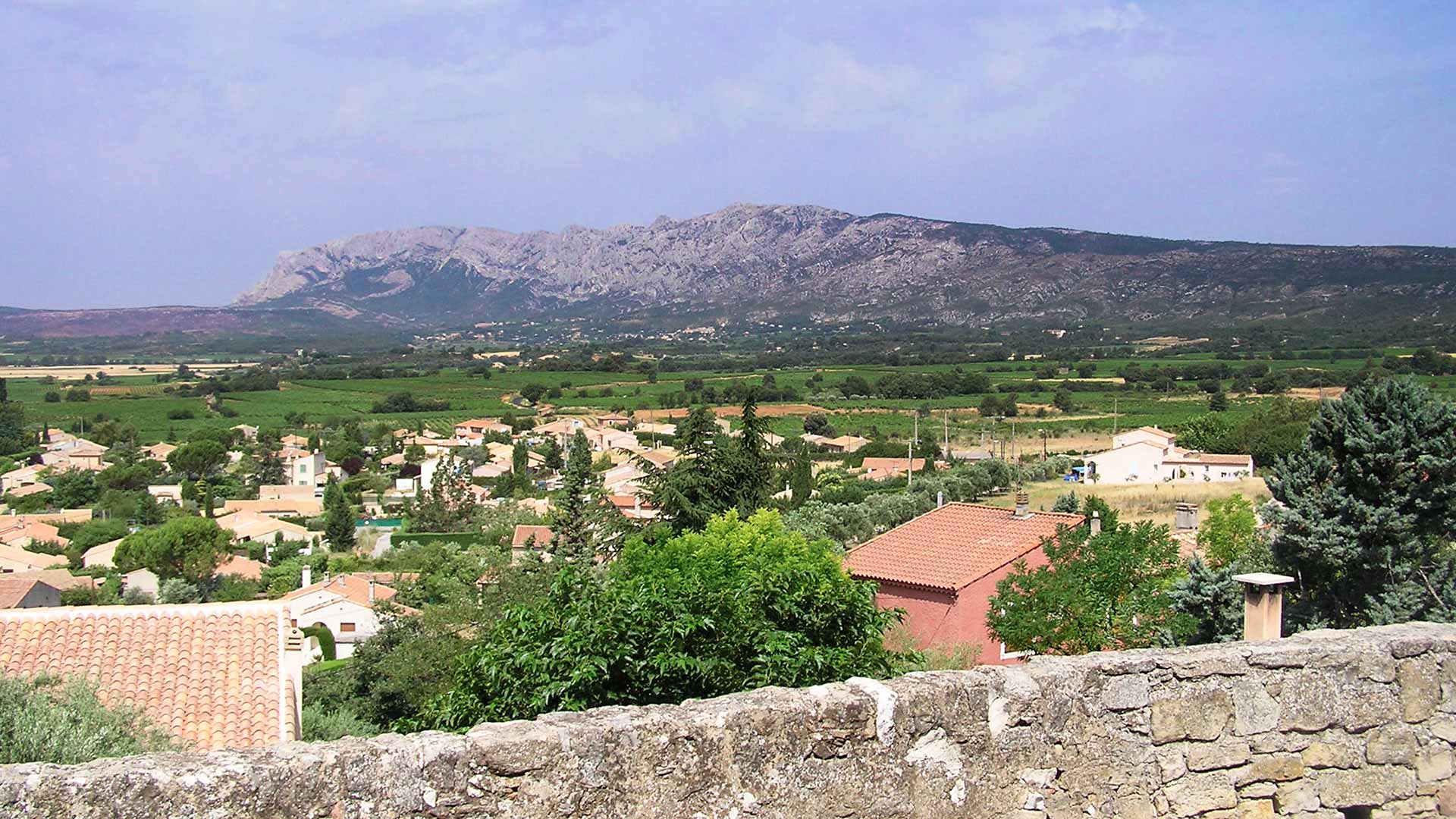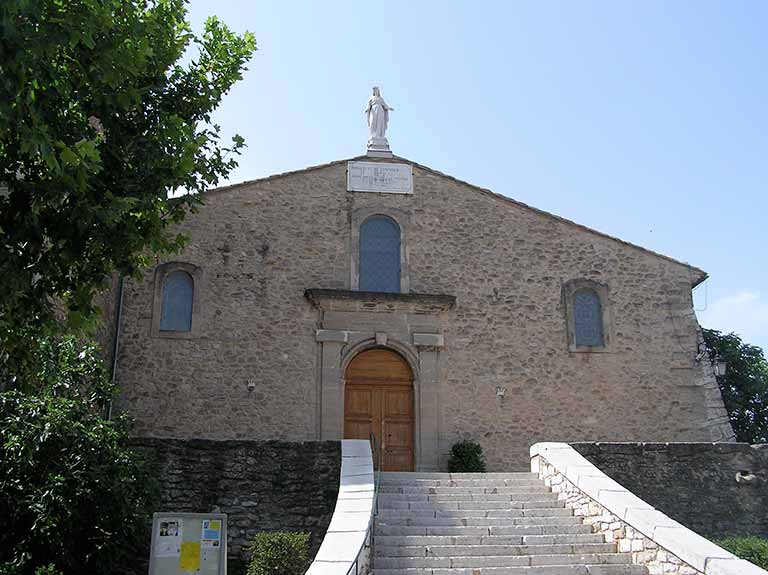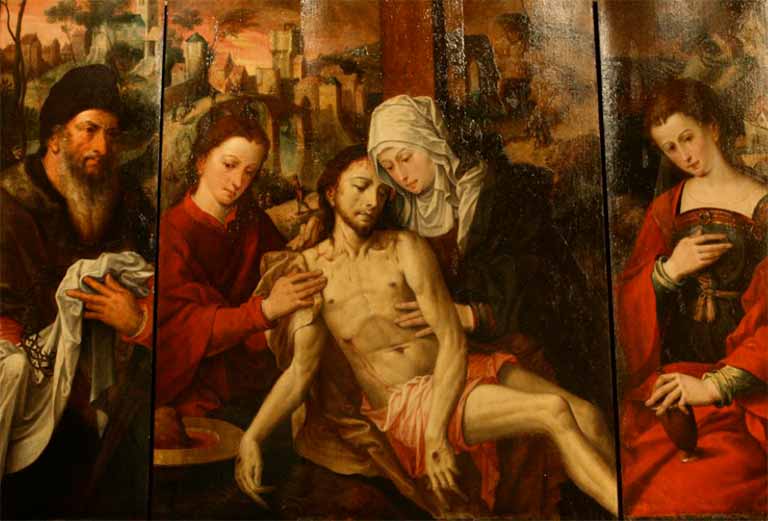
Pourrières Pietà
In Provence we love mystery and legends, and sometimes the two are linked, as is the case here with the Pourrières Pietà. We’ll tell you the fascinating story.
POURRIÈRES

Built on a rocky promontory at the foot of the Sainte Victoire mountain, Pourrières is on the border with the Bouches du Rhône area. A peaceful village of about 5000 souls, it is said to have awakened the painter Cézanne's love for light and colour. It was here, with his grandparents, that the artist spent his childhood holidays. But around ten years or so ago, this Provencal village became known the world over for its Pietà, housed in its church. Since then, numerous experts have studied the mystery surrounding the triptych.
ONCE UPON A TIME...
In 1965, Jean de Gaspary, a well-known and recognized painter, arrived in the village having bought and saved a local monument, the Couvent des Minimes, then in very poor condition. The years passed and the village fell into the gentle torpor of everyday life. At the beginning of the 2000s, a Pourrières native was elected Chief Magistrate, and one of his first actions was to restore the heritage of the municipality and in particular the church. The furniture was put into storage to allow the work to be carried out, which took until 2014. Once completed, the church was tidied up from top to bottom, and there, at the far end of the cellar, protected by a simple cloth was a Pietà. After having been hidden away during the Revolution and two world wars, it had been put there by a former priest and forgotten. The canvas was undamaged but very dirty, almost black - so much so that only the figures in the foreground were visible; for the rest it was barely possible to guess what might be in the background. As an artist, Jean de Gaspary then began to do some research. The painting is not signed or dated. It was the start of a long journey. A succession of experts came to look at the Pietà - for example Patrick Varrot, writer, researcher and heritage specialist, and Alain Payre, writer and art critic.
THE PIETÀ

The panel is medium sized, with a central panel and two smaller panels alongside it. In the centre is a depiction of Saint John and Mary holding Jesus in her arms at the foot of the Cross. On the right, Mary Magdalene is holding a vase filled with perfume and finally on the left, Saint Joseph of Arimathea is gathering the branches of the crown of thorns in a white sheet.
The painting gives the impression that Jesus and Mary are having one last conversation, so close are their faces. The colour red dominates the painting, but it is artistically proportioned and melds into purple shades in the background.
The painting has real similarities with other works from the period of Flemish painters. But a lot of questions are unanswered: who commissioned the painting? Who is the artist? Contact was made with Cécile Scaillierez, General Curator at the Paintings Department at the Louvre Museum. She is a specialist in 16th century French and Dutch painting. Her verdict fell: it appears that the painting does indeed date from the 16th century and from a Flemish workshop. She has attributed the painting to the Master of the Prodigal Son.
BY UNKNOWN AUTHOR
The Master of the Prodigal Son is an anonymous Flemish painter that lived in Antwerp in the 16th century. He owes his "notname" to Georges Hulin de Loo who in 1909 suggested the name after seeing one of his works entitled "The Prodigal Son among the Courtesans" in the Vienna Museum. The painter seems to have been influenced by Mannerism, the artistic movement from 1520 to 1580. The very strong realism of some of his characters brings him closer to Pieter Aertsenet and the elegance of the female figures is reminiscent of Jan Matsys and Frans Floris. Some of these paintings have been replicated several times suggesting that the anonymous artist was at the head of a workshop and that he had many assistants. In numerous works that evoke the Flemish school, he is cited as the head of an important workshop between 1540 and 1560. Specialists acquired around forty paintings by this mysterious faceless artist and his assistants, which are now scattered across several museums and churches in Europe and the United States (Cleveland Museum). Art historians also attribute "Christ and His Disciples on the Road to Emmaus" (Warsaw), "Satan Sowing Tares" (Antwerp), "The Return of Tobias" (Ghent) and many others to him.
ONE WORK, TWO PAINTINGS, TWO VERSIONS
Alain Payre, a writer and art critic who has studied the mystery of the Pietà of Pourrières at length, writes: "Around the themes of the Pietà and the Descent from the Cross, several works identified as belonging to the Antwerp workshop of the Master of the Prodigal Son are indeed closely related to the Pourrières triptych, in particular a painting housed in the National Gallery in London where we find Christ, Mary and Saint John". If you are lucky enough to admire the two works, the resemblance with the triptych showing a Pietà at the Wallfraf Richard Museum in Cologne, is striking. Without any doubt, this work is a second version of the Pourrières Pietà.
THE END?
So let's sum up. We know its period, although it has not been officially dated. We know the studio of the artist who produced the work, although the identity of the painter remains a mystery since it has been lost in time. But we still don't know how this work could have arrived in Pourrières, a small village in Provence. However, this is the most probable hypothesis: it could have been Antoine de Glandevès, an important person in the village in the 16th century, who commissioned the work. The Count of Pourrières died in 1593 at the age of 80. We find his name in many accounts of battles and conflicts fought on behalf of the Kings of France who valued him highly. In 1530, he had the fortress that defended his village razed to the ground and built a chateau flanked by four towers. But in 1536, when Charles V passed through the village, it was looted and burned down. In 1543, he married into the family of Meynier d'Oppède. Since the chateau survived until the Revolution, it is conceivable that after it was demolished, the Pietà was transferred to the parish church. Finally, the ultimate mystery that remains is how this painting came to be forgotten, as well as the carelessness with which it was incorrectly reported and catalogued, thus plunging it into collective oblivion.
Whether you are an art lover or just curious, push open the door of the church in Pourrières and come and discover this work of art that because it was forgotten was protected from the onslaught of time and church looters. (The church is open every day except Monday).